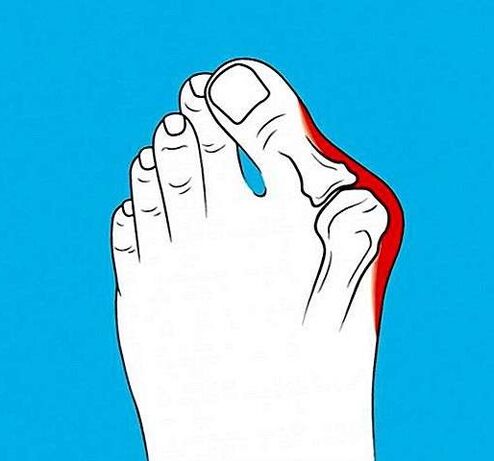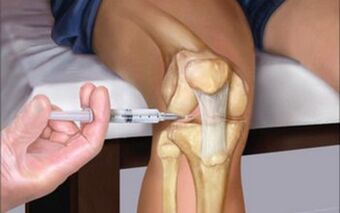
Joints and arthritis are pathological processes in the human body in which various joints are affected. Due to the similarity of these terms, many people are not aware of the difference between the two. But in fact, arthritis and dry joints are not the same disease. And they have significant differences. It is important to study their main symptoms so that if they appear, go to the hospital immediately. You also need to know which doctor treats arthritis so that you can switch to a qualified honey in time. Experts.
Do not self-medicate. At the first sign of illness, see your doctor.
Osteoarthritis is a complex degenerative disease that involves the destruction of cartilage tissue inside the joints. This pathological process is the most common joint disease in the world. According to the latest statistics, about 80% of the world's population suffers from this disease. But most people have no idea exactly what joint disease is. With this disease, over a long period of time, various changes and rearrangements occur at the articular ends of the bones, and inflammatory processes develop. As a result, the peristaltic tissues degenerate.
Many people ask the same question - how is arthritis different from joint disease? Osteoarthritis is a disease that leads to damage to large and small joints. Arthritis is an inflammatory disease that affects the entire human body. The changes that occur in the body don't just affect the joints. The most common diseases of the joints are the heart and the kidneys. Failure to do so can lead to complications and even death.
The likelihood of developing joint or arthritis increases dramatically between the ages of 40-50. The disease affects women and men equally. This disease occurs in people with good health and recently the disease is increasingly younger (people over 30 years old have joint disease). Therefore, knowing what joint disease is and how to properly treat it is extremely important.
Reason
Like arthritis, dryness occurs in the body due to a decrease in metabolism in certain joints. This leads to a loss of elasticity of the cartilage tissue.
Cartilage in the joints of the extremities can be destroyed due to hormone production disorders, reduced blood supply to the joints, and trauma. In addition, certain diseases, such as rheumatoid arthritis, can cause dry joints.
Main reason:
- history of limb trauma;
- advanced age;
- severe hypothermia;
- the presence of inflammatory processes in large and small joints (arthritis and paresis are two simultaneous diseases);
- increase body weight. In this case, there will be a continuous additional load on the joints;
- general intoxication of the body;
- frequent SARS, acute respiratory infections and influenza;
- pathological processes in the thyroid gland;
- hemophilia;
- Perthes disease.
Arthritis can also develop in a person due to genetic disorders - collagen mutations, dysplasia.
Symptom
Symptoms of joint disease appear almost immediately. The first sign of the development of a pathological process is severe pain when loading a certain joint. The pain will decrease when the joint is rested. In medical circles, the following groups of symptoms of rheumatic diseases are distinguished:
- pain.Sharp pain only occurs when performing certain movements. Its localization is in the location of the affected joint. At night, there are practically no sensations of discomfort, since the joint is rested. Pain in a calm state can manifest itself only in the progression of joint disease;
- reduced joint movement.This is true for both rheumatoid arthritis and arthritis. In the early stages of the disease, this symptom does not cause much concern for the patient. But soon the muscles will begin to contract. The gap between the joints will almost completely disappear;
- crunch.The reason for its appearance lies in the fact that due to pathology, the rotational softness of the bones in the joint decreases. Its sound is "dry";
- deformity of the affected joint.This is due to the proliferation of osteoblasts. This is the last symptom to appear. Treatment of joints at this stage is the most difficult.
Stages of the disease
All these signs of arthropathy occur at different stages of disease development. In medical practice, three degrees are distinguished:
- joints of degree 1.The symptoms of arthritis are not obvious. Usually, mild joint pain occurs with exertion or long walks. Pathological changes begin to occur in the fluid and synovial membranes. Treatment of joints at this stage is most effective;
- grade 2 arthritis.Connection is destroyed. Bone cells are formed. Pain with exertion and movement becomes stronger, characteristic crunching is heard in the affected joints;
- grade 3 arthritis.This is the most difficult stage in the development of this disease. There are pathological changes in the sites of the diseased joint. Inflammation occurs. The patient feels stiffness when moving, because the muscles cannot fully contract and perform their functions.
Arthritis in the third stage of development is extremely difficult to cure. There will be more chances of success if you find a qualified professional. Many people ask - which doctor treats joint disease? In this case, you need to seek the help of a rheumatologist. It is a narrow specialty that specializes in the treatment of dystrophic and inflammatory diseases of the connective tissue and joints, such as rheumatism and arthritis.
Complications
If you do not start treatment for arthrosis in the early stages of development, this can lead to the following consequences:
- complete destruction of the joint;
- it will become almost impossible to perform various movements;
- herniated discs of the cervical vertebrae;
- a person's disability;
- complete deformity of the joint;
- The patient's standard of living will decrease.
Treatment
The question of how to treat joint disease is the question of every person at the first signs of the disease. The easiest way to do this is in the early stages of the pathological development, until the violations become irreversible. The essence of therapeutic measures is to eliminate the root causes of the development of joint diseases, and eliminate inflammation in the joints.
Joint treatment should only be comprehensive. It consists of taking pills (tablets, mixtures) that have analgesic and anti-inflammatory properties. Physical therapy procedures are also required.
Principles of joint treatment:
- eliminate excessive stress on the joints;
- Treatment with anti-inflammatory and analgesic drugs. In addition, in complex therapy, chondroprotectors are actively used for joint diseases;
- physical therapy;
- spa treatments;
- magnetic therapy, electrotherapy, laser therapy, shock wave therapy;
- intra-articular oxygen therapy;
- internal blockade;
- It is important to choose the right nutrition for joint disease.
Medicines for treatment
How to treat joints with drugs? This question is most common among patients. Treatment is carried out using three groups of drugs:

- hormonal corticosteroids.Effective for rheumatic diseases in the acute stage. Introduction - internal joints. The tablets are less effective in this case;
- anti-inflammatory drugs.They are used to reduce inflammation in the joints, as well as relieve pain. Doctors do not recommend patients to take drugs because they irritate the stomach lining to some extent. Therefore, they are usually injected into a vein or muscle;
- chondroprotectors for joint disease.They are used to restore the structure of cartilage. Chondroitin sulfate is most commonly prescribed, because it is highly effective. The use of chondroprotectors for rheumatic diseases gives a positive result in the first stage of the pathological development.
Folk recipes
Most people today don't want to take pills or get injections. So they ask the question - how to cure arthritis with the help of folk remedies? For the most part, such funds are aimed at enhancing the tone of the body, improving blood circulation, relieving pain and increasing immunity. Treatment of joints with folk methods is most effective in the early stages of the pathological development. To treat this disease, recipes are used based on the following plants:
- ginger;
- Kalanchoe;
- celery seeds;
- castor beans;
- Cinnamon;
- turmeric;
- horsetail.
Infusions of bay leaves, horseradish, garlic, and rye seeds are also considered effective. Treatment of joint diseases with folk remedies will be most effective if combined with drugs.
Nutrition for joint disease
The diet for joint disease has its own specifics. It is especially important to monitor your diet during an exacerbation. Do not eat too full, because it will increase body weight and load on the injured joint area. But you also can't sit hungry. Cartilage must receive the necessary amount of micronutrients.
Diet for joint disease is aimed at reducing excess weight. Therefore, it is advisable to eliminate carbohydrates from the diet. Sweets, flour, and alcoholic beverages are completely excluded.
Fish dishes can be included in the daily diet. Prefer low-fat varieties. The leading role in the treatment of arthritis is assigned to everyone's favorite food - meat cooked with jelly. Many doctors recommend it, as it is a real panacea for joints. It contains all the necessary trace elements. But the most important ingredient of the dish is natural collagen.

Diet for joint disease should be regular. It is important to eat in portions. The daily menu should include foods rich in B vitamins. They are necessary for the regulation of metabolism.
If you follow the diet for joint disease, then you can significantly improve your general condition.
Basic principles of nutrition:
- the menu must be completely balanced;
- Heavy food should not be eaten in the evening. You can cause an attack of arthrosis;
- if the disease is not in the severe stage, it is advisable to walk a little after eating;
- food should be fractionated;
- you need to constantly monitor your weight and prevent it from increasing;
- if medication is prescribed, then it is necessary to clearly regulate intake and food consumption (taken before or after meals).
Diet for joint disease not only helps to get rid of the unpleasant symptoms of the disease, but also helps to improve the condition of the joints.
Preventive
Prevention of joint disease begins with proper nutrition. Efforts should be made to reduce salt intake as well as foods that can disrupt metabolism. These include legumes, fatty meats, and alcohol. The diet consisted of cabbage, herbs and fish.
To prevent joint disease, it is necessary to go to exercise classes, warm up. If possible, it is better to walk a few kilometers. Monitoring your weight and preventing weight gain is also important, as this puts extra stress on painful joints. Medicines should not be taken with the aim of losing weight, because they can disrupt the metabolism in the body.














































